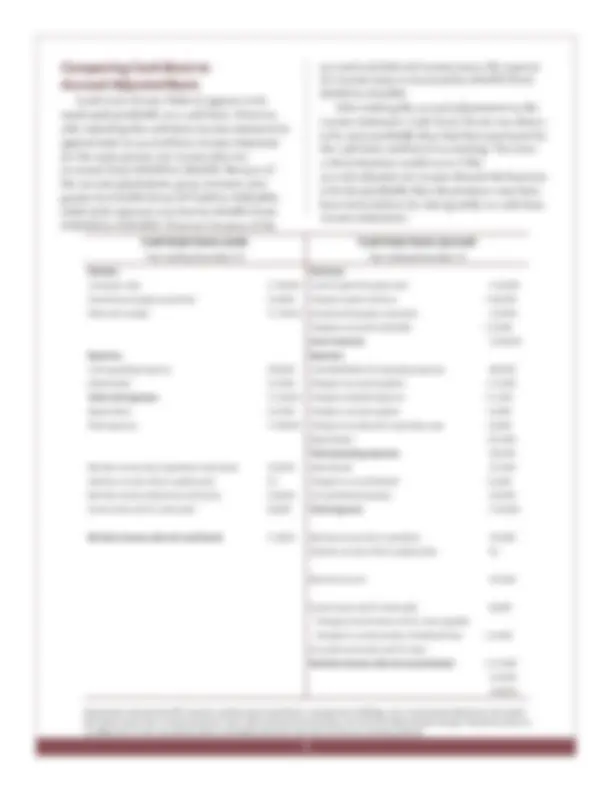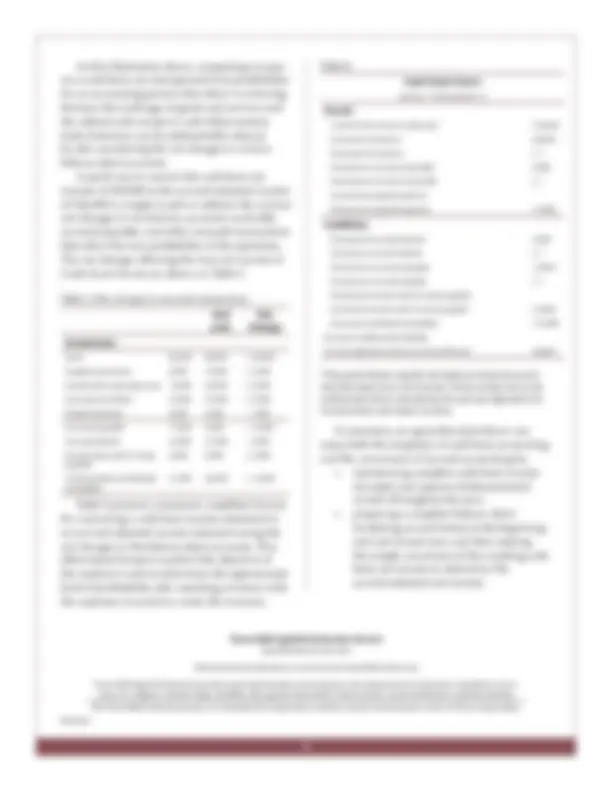




Study with the several resources on Docsity

Earn points by helping other students or get them with a premium plan


Prepare for your exams
Study with the several resources on Docsity

Earn points to download
Earn points by helping other students or get them with a premium plan
Community
Ask the community for help and clear up your study doubts
Discover the best universities in your country according to Docsity users
Free resources
Download our free guides on studying techniques, anxiety management strategies, and thesis advice from Docsity tutors
The differences between accrual and cash basis accounting methods for calculating taxable income. It also discusses the benefits and limitations of each method, and how to adjust cash basis income to approximate accrual income. Real-life examples are provided to illustrate the concepts.
What you will learn
Typology: Lecture notes
1 / 4

This page cannot be seen from the preview
Don't miss anything!



Cash receipts – Beginning inventories
less: Beginning grain inventory (produced in prior year)
plus: Ending grain inventory (current year production)
equals: Accrual grain revenue (approximate value of current year production)
less: Beginning accrued interest (interest owed but not paid in prior year)
plus: Ending accrued interest (interest owed but not paid in current year)
equals: Accrual interest expense (approximate cost of borrowed funds in current year)
AgriLifeExtension.tamu.edu More Extension publications can be found at AgriLifeBookstore.org Texas A&M AgriLife Extension provides equal opportunities in its programs and employment to all persons, regardless of race, color, sex, religion, national origin, disability, age, genetic information, veteran status, sexual orientation, or gender identity. The Texas A&M University System, U.S. Department of Agriculture, and the County Commissioners Courts of Texas Cooperating. Revision
Grain 60,000 80,000 + 20, Supplies purchased 8,000 10,000 + 2, Investment in growing crops 16,000 20,000 + 4, Accounts receivable 22,000 27,000 + 5, Prepaid expenses 4,000 3,000 – 1, Accounts payable 17,000 5,000 – 12, Accrued interest 23,000 21,000 – 2, Income taxes and S.S. taxes payable
Current portion of deferred tax liability
January 1 to December 31
Cash net farm income (after-tax) $18, Increase in inventory 26, Decrease in inventory ( ) * Increase in accounts receivable 5, Decrease in accounts receivable ( ) * Increase in prepaid expenses Decrease in prepaid expenses (1,000)
Decrease in accrued interest 2, Increase in accrued interest ( ) * Decrease in accounts payable 12, Increase in accounts payable ( ) * Decrease in income and S.S. taxes payable Increase in income and S.S. taxes payable (3,000) Decrease in deferred tax liability (13,000) Increase in deferred tax liability Accrual adjusted net farm income (after-tax) 46,